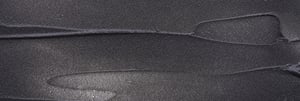Globally, beauty is now a $523B business, with the U.S. leading market share. Even with anticipated shifts, the beauty industry is thriving. The rise of wellness has proved transformative, as have the trends of clean beauty, sustainability, and consumers positively correlating ingredient minimalism with good health. In the U.S., color cosmetics’ growth is slowing after a period of hyper-consumption (2013-2017) and has been overtaken by skincare. Though color cosmetics are expected to grow through 2023, skincare is anticipated to accelerate and maintain its dominance. Here we review the significant forces reconstructing beauty, and offer a picture of the future based on new consumer research.
BEAUTY, BUSINESS, BILLIONS
Health, personal care, and beauty e-comm overall is experiencing an 18.6% lift for 2019, the second-highest increase behind food and beverage. While the category as a whole is flourishing, within the U.S., skincare is the growth driver. Skincare leads in retail value ($21.6B) and is predicted to grow by nearly 33% to $26.7B by 2023. Skin is clearly connecting with consumers, so, what else is?
NATURAL IS IN
Gen Z and Millennial women are most likely to follow a skincare routine, finding the process to be both relaxing and self-esteem boosting. Spurred by a clean beauty obsession, an interest in sustainability, the desire for control, and a commitment to "self-care," young women now prefer the natural look. This tendency has been bolstered by “dewy” Instagram visuals, the presence of which are continuous. In a Mintel study, 64% of Gen Z and 65% of Millennial women noted that the “natural look” was most important to them when selecting makeup. Gen X and older offered a dissimilar response, with 70% responding that color was their top priority. The long-term growth of color cosmetics is likely challenged; the population of women 65+ is expected to grow 16% through 2024, and category engagement tends to wane with age.
This is not to say that makeup is out of vogue; in fact, Millennials use the most facial makeup of any generation. However, the makeup products that complement the natural look, employ clean ingredients, and inspire confidence will prove successful.
THE CLEAN BEAUTY HABIT
Clean beauty has staying power for myriad reasons. Regardless of generation, clean beauty interests 46% of women. Similarly, 47% of women feel that using natural ingredients is safer, with Gen Z (60%) driving that figure upwards. Beauty shoppers are loyal; 66% of 18-34-year-old women shop at the same stores and 56% buy the same products. In short, the combination of the desirable natural look, an increase in ingredient awareness, and consistent shoppers will cement the strong growth and future of clean beauty.
At Stella Rising, we take a holistic approach, powered by research and a deep commitment to beauty brands, to truly understand consumers. If you are interested in learning more about how we power brands through smart strategy, reach out to us today.
Sources: Euromonitor, "Beauty and Personal Care," eMarketer, “Retail Ecommerce Sales Growth, by Product Category,” Mintel, Beauty Retailing—US—September 2018, Mintel, The Beauty Consumer—US—February 2018, Mintel, Ingredient Trends in Beauty—US—October 2018, Mintel, Facial Skincare and Anti-Aging—US—April 2019, Mintel, Color Cosmetics—US—July 2019, Euromonitor, “Colour Cosmetics in the US,” June 2019



COMMENTS